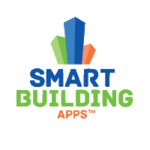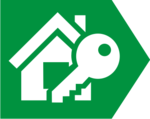Description

Smart Building Apps

dotloop

ProNest
Comprehensive Overview: Smart Building Apps vs dotloop vs ProNest
Smart Building Apps
a) Primary Functions and Target Markets
Smart Building Apps are designed to optimize the management and operation of buildings by leveraging Internet of Things (IoT) technology, data analytics, and automation. Their primary functions typically include energy management, HVAC control, lighting automation, security monitoring, and occupancy analytics. They are often integrated into a centralized building management system to provide real-time insights and control.
Target Markets:
- Commercial real estate
- Office buildings
- Educational institutions
- Healthcare facilities
- Hospitality sectors
b) Market Share and User Base
The market for Smart Building Apps is diverse and rapidly growing, driven by the increasing demand for energy-efficient solutions and sustainable building practices. Major players in this space include large technology firms and specialized IoT solution providers. However, the market is fragmented with numerous vendors offering tailored solutions for different building needs, making it difficult to pinpoint exact market share percentages. Adoption rates vary significantly by region and building type.
c) Key Differentiating Factors
- Integration Capabilities: Ability to integrate with existing building systems and platforms.
- Scalability: Solutions that can grow with building portfolios.
- User Interface: Ease of use and accessibility of mobile and web interfaces.
- Customization: The extent to which solutions can be tailored to specific client needs.
- Data Analytics: Advanced analytics capabilities for predictive maintenance and energy optimization.
dotloop
a) Primary Functions and Target Markets
dotloop is a real estate transaction management software that simplifies and streamlines the process of buying and selling real estate. Its primary functions include document management, e-signature facilitation, compliance tracking, and communication tools for real estate agents and their clients.
Target Markets:
- Real estate agents and brokers
- Real estate transaction coordinators
- Real estate agencies and firms
b) Market Share and User Base
dotloop is a well-known name in the real estate sector, particularly in North America. It's part of Zillow Group, which gives it significant clout and visibility in the marketplace. The user base is composed largely of real estate professionals seeking more efficient and organized transaction processes. While exact market share figures are not easily available, dotloop is regarded as one of the leading platforms in the transaction management space, competing with other solutions like DocuSign and SkySlope.
c) Key Differentiating Factors
- Integration with Zillow: Direct integration with Zillow can provide competitive advantages in listings and lead generation.
- Ease of Use: Intuitive design aimed at simplifying real estate transactions.
- Comprehensive Transaction Management: Full suite of tools from offers to closings, all within one platform.
- Compliance Features: Built-in compliance tracking and audit trails for document management.
ProNest
a) Primary Functions and Target Markets
ProNest is an advanced CAD/CAM nesting software program used primarily in manufacturing environments for optimizing the cutting processes. Primary functions include automated nesting, cost estimation, and management of work orders and plate inventory, aimed at improving efficiency and reducing waste in materials cutting.
Target Markets:
- Sheet metal fabrication
- Steel service centers
- Manufacturing companies
- Industrial equipment producers
b) Market Share and User Base
ProNest is owned by Hypertherm, a leader in industrial cutting technologies, which provides a significant market presence. The software is widely used among manufacturers looking for precision in cutting and materials savings. As with many niche industrial software solutions, specific market share is hard to determine due to the specialized nature of the products and market.
c) Key Differentiating Factors
- Optimization Algorithms: Advanced algorithms for optimal material usage and cutting efficiency.
- Industry Tailored Solutions: Customizable features to meet the specific needs of different industries and cutting technologies.
- Integration: Seamless integration with existing CAD systems and cutting machinery.
- Cost Management Features: Detailed reporting and analysis tools to manage and reduce cutting costs.
Overall, Smart Building Apps, dotloop, and ProNest serve distinct markets with unique functionalities tailored to meet specific industry needs. The key differentiators for each product lie in their integration capabilities, usability, and specialized functionalities that cater directly to their core users. Market share and user base details are generally more opaque due to competitive industry dynamics and the specificity of the services offered within each segment.
Contact Info

Year founded :
2008
Not Available
Not Available
Canada
Not Available

Year founded :
2008
+1 513-257-0550
Not Available
United States
http://www.linkedin.com/company/dotloop

Year founded :
1991
Not Available
Not Available
Egypt
Not Available
Feature Similarity Breakdown: Smart Building Apps, dotloop, ProNest
When comparing Smart Building Apps, dotloop, and ProNest, it's important to understand each product's focus and offerings to identify similarities and differences. Here's a breakdown based on their features, user interfaces, and unique aspects:
a) Core Features in Common
Smart Building Apps:
- Typically focus on integrating IoT devices for facility management, energy optimization, security, and occupant comfort.
- Include features for HVAC control, lighting management, security monitoring, and system alerts.
dotloop:
- Primarily for real estate transaction management, offering tools for document creation, editing, sharing, and signing.
- Includes features for collaboration, document storage, and task management to streamline real estate transactions.
ProNest:
- A nesting software solution designed for manufacturers, its primary focus is on optimizing the cutting of metal sheets, wood, and other materials.
- Includes advanced nesting software features, cost estimation, and CNC machine programming.
Common Core Features:
- Although aimed at different industries, all three may offer:
- Cloud-based Operation: Enabling remote access and data storage.
- Integration Capabilities: Ability to integrate with other software and hardware systems (e.g., IoT devices, CRM tools, or CNC machines).
- Data Analytics and Reporting: Providing insights into operations, whether it’s facility usage, transaction progress, or material optimization.
b) User Interface Comparison
-
Smart Building Apps: Typically offer dashboards that allow facility managers to monitor and control different building systems in real time. The UI focuses on intuitive design with easy navigation for quick access to various sub-systems like lighting, HVAC, and security.
-
dotloop: Being real estate-focused, the interface is designed for ease of collaboration, emphasizing document tracking, task lists, and communication between transaction participants. It often includes visual cues for document status and quick access to recent activities.
-
ProNest: The UI is industrial-focused, emphasizing detailed visualization of nesting layouts, material usage charts, and machine operation statistics. The emphasis is on precision and efficiency, catering to engineers and manufacturing professionals.
c) Unique Features
Smart Building Apps:
- IoT Device Integration: Allows for extensive customization and control over various building systems, including advanced energy management and real-time alerts for facility issues.
- Occupant-Centric Features: Some apps include features aimed at improving occupant experience, such as personalized climate control or room booking systems.
dotloop:
- Real Estate Specific Tools: Unique features like e-signature, document version control, and compliance management make it stand out for real estate professionals.
- Collaboration at Scale: Allows multiple parties in a transaction to work seamlessly with features specific to real estate negotiations.
ProNest:
- Advanced Nesting Algorithms: Offers unique optimization algorithms that reduce material waste, critical for manufacturing.
- Integration with CNC Machines: Provides seamless integration with CNC machinery for executing optimized cutting plans directly from the software.
In summary, while there are some high-level similarities in terms of tech integration and cloud support, each product excels in its niche - building management for Smart Building Apps, real estate transactions for dotloop, and manufacturing efficiency for ProNest. The user interfaces are designed to cater to their respective users, emphasizing intuitive control for building managers, streamlined document handling for real estate professionals, and detailed precision for manufacturers.
Features

Not Available

Not Available

Not Available
Best Fit Use Cases: Smart Building Apps, dotloop, ProNest
Let's delve into each of these software solutions and their best fit use cases across different industries and company sizes:
a) Smart Building Apps
Types of Businesses or Projects:
- Commercial Real Estate: These apps are ideal for managing large commercial properties, including office buildings, shopping centers, and mixed-use developments. They offer features like energy management, security monitoring, and facility optimization.
- Property Management Firms: Companies that handle multiple residential or commercial properties benefit from streamlined operations, improved tenant experiences, and efficient maintenance management.
- Construction Management: During the construction phase, smart building apps can be used to integrate various building systems, track progress, and enhance on-site communication.
Catering to Industry Verticals or Company Sizes:
- Large Enterprises: Companies with significant real estate holdings can leverage these apps for comprehensive portfolio management.
- Utility Companies: Energy and utility companies can utilize these platforms to manage and analyze large-scale energy consumption data, optimizing for sustainability and cost savings.
b) dotloop
Preferred Scenarios:
- Real Estate Transactions: dotloop is specifically designed for real estate professionals to facilitate the buying and selling process by managing documents, e-signatures, and transaction workflows.
- Real Estate Brokers and Agents: It is perfect for individual agents and brokerages looking to streamline communication and documentation with clients and other parties involved in property transactions.
Catering to Industry Verticals or Company Sizes:
- Small to Medium Real Estate Firms: dotloop is especially beneficial for firms needing a robust yet user-friendly tool to handle contracts and client data efficiently.
- Real Estate Franchises: Larger franchises can centralize their transaction management and ensure compliance across multiple offices.
c) ProNest
When to Consider:
- Manufacturing and Fabrication: ProNest is a CAD/CAM nesting software tailored for industries that require precision in cutting operations, such as metal fabrication for automotive, aerospace, or industrial machinery.
- Custom Fabrication Shops: Shops that need quick adaptation to custom orders will benefit from the flexibility and efficiency of ProNest’s nesting capabilities.
Catering to Industry Verticals or Company Sizes:
- Large Manufacturing Plants: Enterprises with heavy production lines can benefit from the substantial material savings and increased efficiency provided by ProNest.
- Job Shops: Small to medium-sized shops focusing on custom or small batch orders can leverage features like cost estimation and automatic nesting for pricing and planning.
Conclusion
Each product caters to specific needs across various industries:
- Smart Building Apps focus on real estate and construction management for efficient building operations, mainly benefiting large property managers and utility companies.
- dotloop streamlines real estate transactions, ideal for real estate agents and brokers managing contracts and client interactions.
- ProNest is essential for the manufacturing sector, specifically useful for companies involved in cutting and fabrication processes, enhancing efficiency, and resource management.
All three solutions offer scalability, serving both small enterprises and large corporations with industry-specific functionalities tailored to optimize business processes.
Pricing

Pricing Not Available

Pricing Not Available

Pricing Not Available
Metrics History
Metrics History
Comparing teamSize across companies
Conclusion & Final Verdict: Smart Building Apps vs dotloop vs ProNest
To adequately provide a conclusion and final verdict for Smart Building Apps, dotloop, and ProNest, we first need to understand the key functionalities and the primary market each product serves. Here’s a comprehensive assessment:
a) Best Overall Value
The best overall value depends on the specific needs of the user. If you consider general criteria such as functionality, usability, price-point, and customer support:
-
Smart Building Apps: Offers excellent value for users focusing on building management, energy efficiency, and occupant comfort. Ideal for facilities managers looking to streamline operations and enhance building intelligence.
-
dotloop: Provides outstanding value for real estate professionals who require a robust transaction management platform. Its efficiency in closing deals, handling paperwork, and facilitating communication between parties make it indispensable for agents and brokers.
-
ProNest: Best value for manufacturing and industrial users who require advanced nesting software for cutting and fabrication processes. Its capabilities in optimizing material usage and improving workflow efficiency are significant value propositions for production-focused operations.
b) Pros and Cons
Smart Building Apps
- Pros:
- Comprehensive building management features
- Enhances energy efficiency and sustainability
- Integration capabilities with IoT devices
- Cons:
- Can be complex to implement across older buildings
- Initial setup and training may be costly
dotloop
- Pros:
- Streamlines the entire real estate transaction process
- Highly intuitive interface
- Excellent customer support and onboarding resources
- Cons:
- Primarily suited for real estate; limited use outside the industry
- Advanced features can incur additional costs
ProNest
- Pros:
- Advanced nesting and cutting optimization
- Supports a wide range of cutting machines
- Improves material utilization and reduces waste
- Cons:
- Primarily beneficial for manufacturing industries
- Requires technical expertise to fully leverage all features
c) Specific Recommendations
-
For Real Estate Professionals: Choose dotloop due to its specialized focus on transaction management. Its industry-specific features align well with the needs of agents and brokers.
-
For Facilities and Building Managers: Smart Building Apps would be a better choice. Its features support comprehensive building management and energy efficiency, which are crucial in these roles.
-
For Manufacturing and Fabrication Operations: Opt for ProNest to leverage its nesting optimization capabilities, crucial for reducing material costs and improving production efficiency.
General Recommendation: Users should evaluate their specific industry needs and operational requirements. Consider trial versions or demos of each software to assess usability and feature alignment with your organizational goals. Additionally, factor in the total cost of ownership, including potential integration and training expenses, to make a well-informed decision.